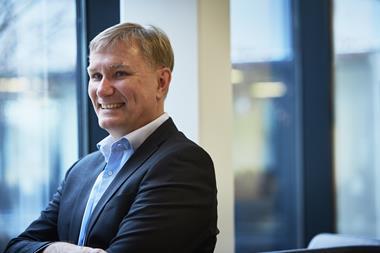The largest five pension funds in the Netherlands narrowly avoided a second year in a row of negative returns, as the fall in interest rates in the final quarter of 2023 pushed returns back into positive territory.
Overall returns came in somewhere between 7.8% (Bpf Bouw) and 9.3% (ABP) for the five funds. With interest rates ending the year around the same level they started, fixed income returns varied between 6.3% (ABP) and 9.1% (PMT): quite a contrast to 2022, when the value of the metals industry scheme’s bond portfolio almost halved.
As stock markets rose throughout 2023, and especially in the last three months, the five funds all posted double-digit returns on their equity portfolios. Healthcare scheme PFZW posted the highest return at 18%, while construction scheme Bpf Bouw made the lowest gains at 14%, as the MSCI World Index returned 17.4% measured in euros over the year, according to data from Capital IQ.
| Funds | Equities | Bonds | Private equity | Total |
|---|---|---|---|---|
| ABP | 15.4 | 6.3 | 5.9 | 9.3 |
| PFZW | 18.1 | 7.8 | 0.3 | 8.2 |
| PMT | 17.2 | 9.1 | 0.4 | 8.4 |
| PME | 17.15 | 7.25 | 3.04 | 8.7 |
| BpfBouw | 14 | 7.6 | N/A | 7.8 |
Source: Sameer van Alfen
Mixed bag
Real estate returns reveal a differentiated picture, with listed real estate showing a strong performance while the values of private real estate are still being adjusted to the higher-interest rate environment.
To illustrate, healthcare scheme PFZW reported a 10% return on real estate stocks, but a -8.5% return on its private real estate portfolio. Within private real estate, fortunes are also mixed. Bpf Bouw, which invests some 20% of its assets in real estate, reported a positive return on its Dutch residential and hotel portfolios, a “neutral” return on its retail assets and a negative return on its healthcare and office buildings. Overall, it posted a -0.2% return on its real estate assets.
Performance of alternative assets was also a mixed bag, with some of the funds posting negative returns on private equity and infrastructure while others reporting positive returns in the low single-digits.
In total, the large five pension funds added €81bn in assets, recovering part of the €212bn that was lost in 2022.
Special year
“It has been a special year,” commented Eric Uijen, the president of PME, the scheme for technology sector. “Whereas interest rates rose during the first three quarters, they came down in the last quarter.”
As a result, the funding ratios of the five funds also came down again after they had risen on the back of increasing interest rates and despite the negative returns between Q1 2022 and Q3 2023.
Four of the five funds ended 2023 at lower funding levels, except for Bpf Bouw. The reason for this is that the construction scheme, despite being the richest of the five large funds, did not index pensions because inflation was negative over the reference period used by the fund.
The other four funds did increase pensions by 3% (ABP), 3.3% (PMT and PME) and 4.8% (PFZW) because they use different reference periods for inflation, which has been extremely volatile of late.
Looking for IPE’s latest magazine? Read the digital edition here



























No comments yet